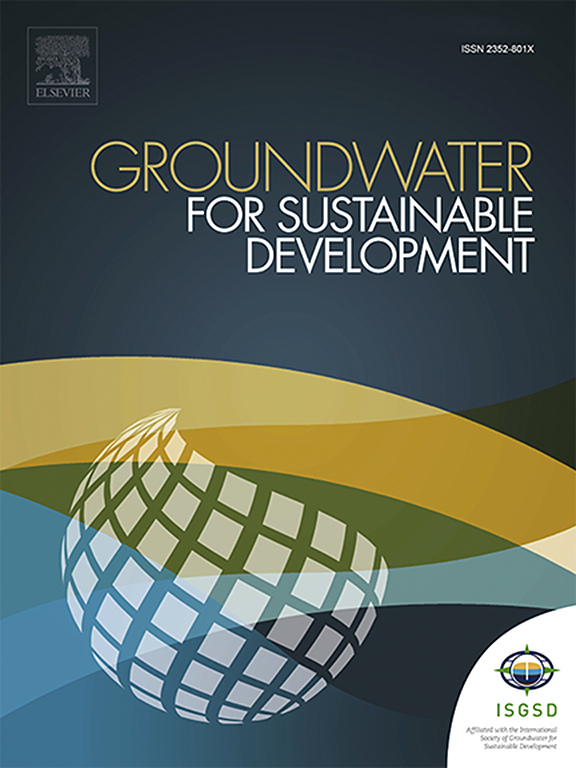Machine learning prediction of allelochemical inhibition ratio (IR) on Microcystis aeruginosa growth
IF 4.9
Q2 ENGINEERING, ENVIRONMENTAL
引用次数: 0
Abstract
This study consolidates a dataset of 83 allelochemicals derived from plant parts, microbes, marine organisms and agricultural byproducts, underscoring their ecological relevance. While allelopathic inhibition is a promising process for suppressing HABs, current research exhibits inconsistencies in elucidating its underlying mechanism. Furthermore, the field remains constrained by a lack of systematic comparisons among machine learning (ML) models. To bridge these gaps, we integrated multi-source experimental data and employed diverse ML algorithms to predict allelochemical inhibition ratio (%) against Microcystis aeruginosa. This methodology pinpoints critical variables for optimizing treatment efficacy and addresses key limitations of conventional experimental approaches. Through quantitative analysis, novel insights into feature importance and inhibition dynamics are established, significantly advancing predictive accuracy in HAB management. Statistical analysis of the dataset revealed an average inhibition ratio of 54 %, with values ranging from 10 % to 100 %. Among evaluated ML models, Random Forest, Bagging, and Extreme Gradient Boosting Regressors showed superior performance in predicting inhibition ratio (%). From a dataset of 83 allelochemicals classified into 15 categories, exposure concentration, exposure time, algal biomass, linoleic acid microspheres, flavonoids, and plant extracts were identified as most influential factors affecting inhibition efficiency. Notably, Microcystis aeruginosa inhibition was highly sensitive to shorter exposure durations (10–12 days), lower algal biomass (optimal at 1 × 107 cells/mL), and concentrations exceeding 0.05 g/L. The exponential growth phase emerged as a critical window for bloom controlling. Overall, this framework offers a data-driven foundation for policy-makers and researchers to design targeted biocontrol strategies, mitigating the ecological and economic threats posed by HABs.

化感化学抑制比(IR)对铜绿微囊藻生长的机器学习预测
本研究整合了来自植物部位、微生物、海洋生物和农业副产品的83种化感化学物质的数据集,强调了它们的生态相关性。虽然化感抑制是抑制有害藻华的一个很有前景的过程,但目前的研究在阐明其潜在机制方面表现出不一致。此外,该领域仍然受到机器学习(ML)模型之间缺乏系统比较的限制。为了弥补这些空白,我们整合了多源实验数据,并采用不同的ML算法来预测对铜绿微囊藻的化感化学抑制率(%)。该方法确定了优化治疗效果的关键变量,并解决了传统实验方法的关键局限性。通过定量分析,建立了对特征重要性和抑制动力学的新见解,显著提高了赤潮管理的预测准确性。数据集的统计分析显示,平均抑制率为54%,值从10%到100%不等。在评估的ML模型中,随机森林、Bagging和极端梯度增强回归在预测抑制率(%)方面表现优异。从15类83种化感物质的数据集中,确定了暴露浓度、暴露时间、藻类生物量、亚油酸微球、类黄酮和植物提取物是影响抑制效率的最重要因素。值得注意的是,铜绿微囊藻的抑制作用对较短的暴露时间(10-12天)、较低的藻类生物量(1 × 107个细胞/mL)和超过0.05 g/L的浓度高度敏感。指数生长阶段成为控制花华的关键窗口期。总体而言,该框架为决策者和研究人员设计有针对性的生物防治策略,减轻有害藻华造成的生态和经济威胁提供了数据驱动的基础。
本文章由计算机程序翻译,如有差异,请以英文原文为准。
求助全文
约1分钟内获得全文
求助全文
来源期刊

Groundwater for Sustainable Development
Social Sciences-Geography, Planning and Development
CiteScore
11.50
自引率
10.20%
发文量
152
期刊介绍:
Groundwater for Sustainable Development is directed to different stakeholders and professionals, including government and non-governmental organizations, international funding agencies, universities, public water institutions, public health and other public/private sector professionals, and other relevant institutions. It is aimed at professionals, academics and students in the fields of disciplines such as: groundwater and its connection to surface hydrology and environment, soil sciences, engineering, ecology, microbiology, atmospheric sciences, analytical chemistry, hydro-engineering, water technology, environmental ethics, economics, public health, policy, as well as social sciences, legal disciplines, or any other area connected with water issues. The objectives of this journal are to facilitate: • The improvement of effective and sustainable management of water resources across the globe. • The improvement of human access to groundwater resources in adequate quantity and good quality. • The meeting of the increasing demand for drinking and irrigation water needed for food security to contribute to a social and economically sound human development. • The creation of a global inter- and multidisciplinary platform and forum to improve our understanding of groundwater resources and to advocate their effective and sustainable management and protection against contamination. • Interdisciplinary information exchange and to stimulate scientific research in the fields of groundwater related sciences and social and health sciences required to achieve the United Nations Millennium Development Goals for sustainable development.
 求助内容:
求助内容: 应助结果提醒方式:
应助结果提醒方式:


